Le retour des objets, quasi objets et super-objets (The return of objects, quasi objects and super objects)
Filipe Pais
Fondation Calouste Gulbenkian
Conference
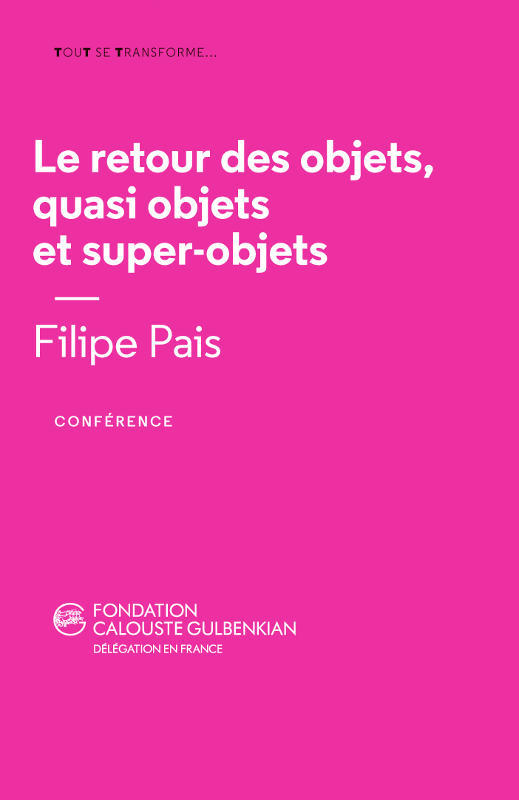
A chair drops and kills a dictator. Windows, doors and other daily life objects mysteriously disappear. These are the themes of two short stories published in 1978 by José Saramago in Quasi Objets, one of his lesser known works. In his book, José Saramago introduces ordinary objects that come to life and free themselves from their function. These quasi objects are endowed with consciousness and intentionality. They can act on the world, emancipate from an anthropocentric existence and even take revenge on a confident master. What happens to the OUMIS (objects, utensils, machines or installations) in Quasi Objets? Why did they leave? Where did they go? Saramago does not provide us with final answers to these questions. One thing is for sure: the story must be continued… Which is the aim of the first conference of this cycle. At the intersection of art, philosophy and design, this conference invites us to reflect on the notion of Quasi Objects and its influence on Michel Serres and Bruno Latour’s works and to imagine another type of object: the Super Object.
Behavioral Objects I — Céleste Boursier-Mougenot: A Case Study
Samuel Bianchini, Emanuele Quinz, eds.
Sternberg Press
Copublished with École nationale supérieure des Arts Décoratifs – Paris PSL Research University
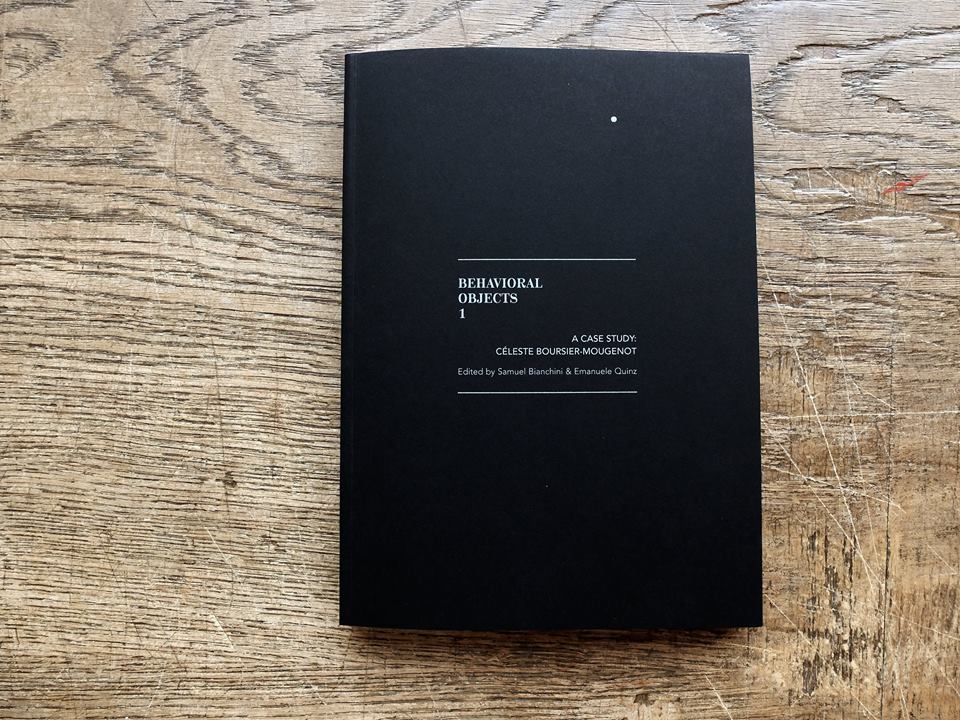
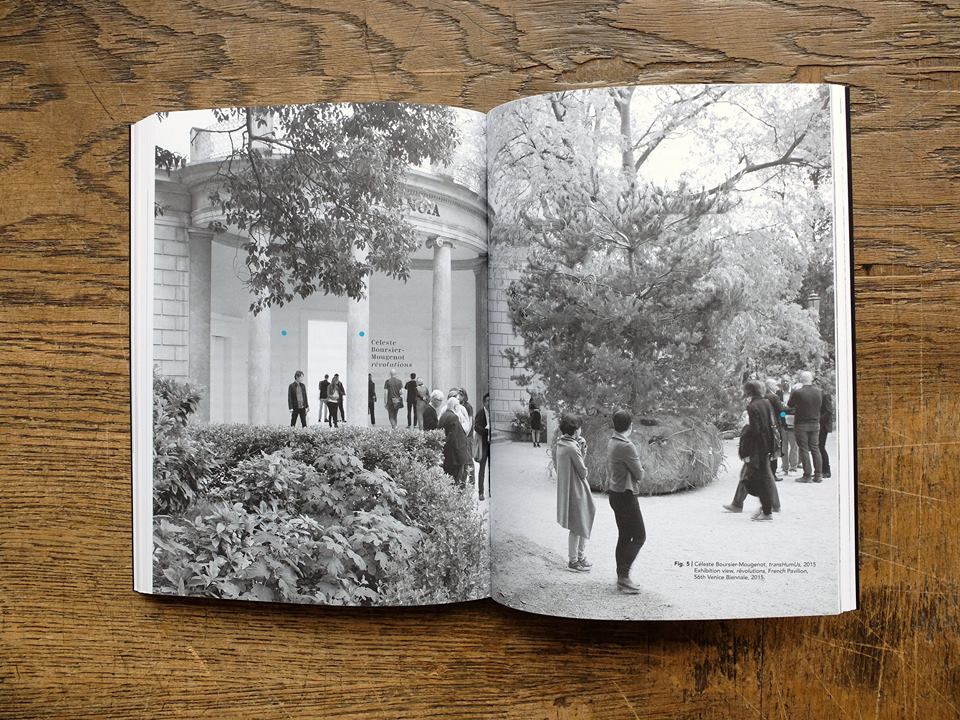
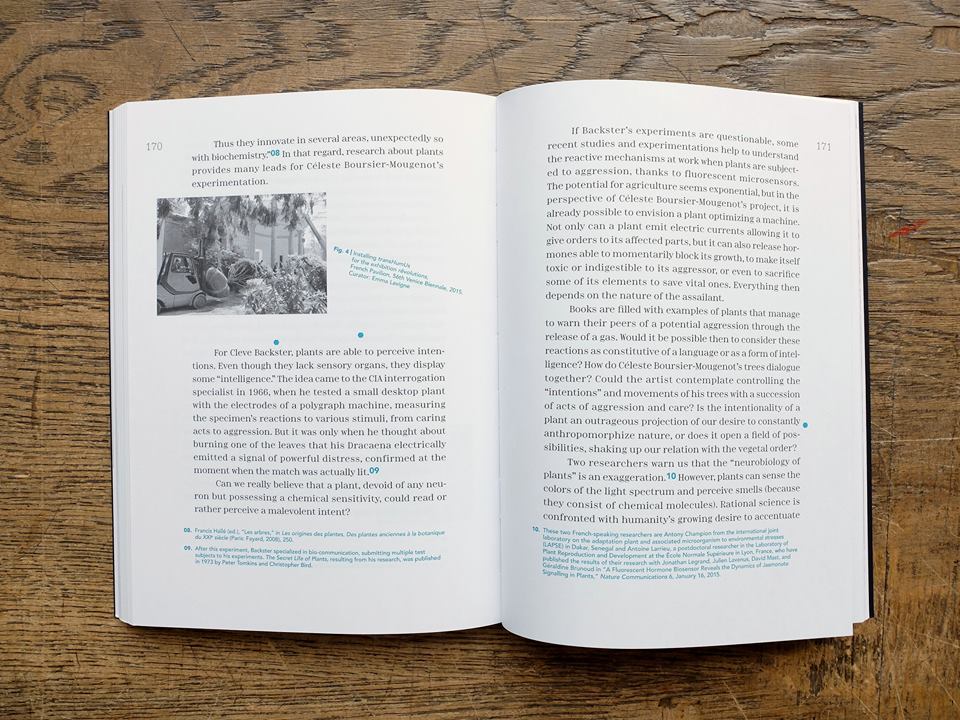
Contributions by Samuel Bianchini, Céleste Boursier-Mougenot, Jaime DeSimone, Jean-Paul Laumond, Florent Levillain, Emanuele Quinz, Bénédicte Ramade, Trevor Smith, Elisabetta Zibetti
Three grand pianos slowly make their way through the large exhibition space allotted to them, sometimes bumping into one another. These animate objects, which constitute offroad (2014), a work by the artist Céleste Boursier-Mougenot, appear to be living beings, each with its own behavior. They are perfect examples of behavioral objects, whose little-known history dates back to the avant-garde and the emergence of cybernetics.
What exactly is a behavioral object? How can it be analyzed, understood, theorized, experienced, and how can we conceive of works that possess the faculty of action and reaction to their environment and public? Examining three works by Céleste Boursier-Mougenot, this book tackles these questions and defines a new field of research and practice.
Strange Design — From Objects to Behaviors
Jehanne Dautrey & Emanuele QuinZ
it:éditions
Graphic design by Clément Le Tulle-Neyret
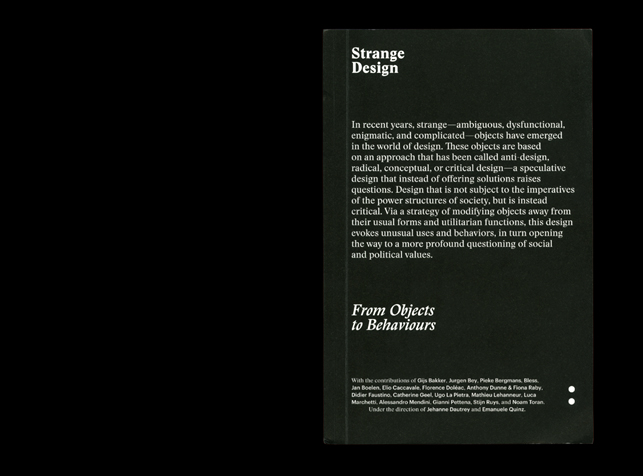
In recent years, strange—ambiguous, dysfunctional, enigmatic, and complicated—objects have emerged in the world of design. These objects are based on an approach that has been called anti-design, radical, conceptual, or critical design—a speculative design that instead of offering solutions raises questions. Design that is not subject to the imperatives of the power structures of society, but is instead critical. Via a strategy of modifying objects away from their usual forms and utilitarian functions, this design evokes unusual uses and behaviors, in turn opening the way to a more profound questioning of social and political values.
With the contributions of Gijs Bakker, Jurgen Bey, Pieke Bergmans, Bless, Jan Boelen, Elio Caccavale, Florence Doléac, Anthony Dunne & Fiona Raby, Didier Faustino, Catherine Geel, Ugo La Pietra, Mathieu Lehanneur, Luca Marchetti, Alessandro Mendini, Gianni Pettena, Stijn Ruys, and Noam Toran.
With the support of the École Nationale Supérieure des Arts Décoratifs in Paris and the École Nationale Supérieure d’Art et de Design in Nancy, as well as the “Scènes du Monde, Création, Savoirs Critiques” Université Paris 8 Research Unit (EA 1573).
ARTICLES
• St-Onge, D., Levillain, F., Zibetti, E., & Beltrame, G. (2019). Collective expression: How robotic swarms convey information with group motion. Paladyn, Journal of Behavioral Robotics, 10, 418-435.
• Levillain, F., St-Onge, D., Beltrame, G. & Zibetti, E. (2020). Towards situational awareness from robotic group motion. In Proceedings of the 28th International Symposium on Robot and Human Interactive Communication (RO-MAN), Delhi, India, October 14-18, 2019.
• Levillain, F., & Lepart, S. (2019). Looking for the minimal qualities of expressive movement in a non-humanlike robot. AISB 2019 Symposium on Movement that Shapes Behaviour, Falmouth, UK, April 18.
• Levillain, F., St-Onge, D., Zibetti, E., & Beltrame, G. (2018). More than the sum of its parts: Assessing the coherence and expressivity of a robotic swarm. In Proceedings of the 27th International Symposium on Robot and Human Interactive Communication (RO-MAN), Nanjing, China, August 27-31, 2018.
• Bianchini, Samuel, Florent Levillain, Armando Meniccaci, Emanuele Quinz, and Elisabetta Zibetti. “Towards Behavioral Objects: A Twofold Approach for a System of Notation to Design and Implement Behaviors in Non-anthropomorphic Robotic Artifacts.” In Dance Notations and Robot Motion, edited by Naoko Abe and Jean-Paul Laumond, 1–24. Berlin: Springer International Publishing, Springer Tracts in Advanced Robotics series, 2016.
• Bianchini, Samuel. “Towards Organogenesis: For an Instrumental Approach in Research in Art.” Media-N, Research-Creation: Explorations 11 no. 3 (Winter 2015) pp. 22–31. http://median.newmediacaucus.org/research-creation-explorations/towards-organogenesis-for-an-instrumental-approach-in-research-in-art.
• Bianchini, Samuel, Rémy Bourganel, Emanuele Quinz, Florent Levillain and Élisabetta Zibetti. “(Mis)behavioral Objects, Empowerment of Users vs. Empowerment of Objects.” In Empowering Users Through Design, Interdisciplinary Studies and Combined Approaches for Technological Products and Services, edited by David Bihanic, 129–52. Berlin: Springer International Publishing, 2015.
• Grimaud, Emmanuel, “Les robots oscillent entre vivant et inerte.” Multitudes, no. 58 (Spring 2015): 48–58.
• Levillain, Florent, Sébastien Lefort and Elisabetta Zibetti. “Moving on Its Own: How Do Audiences Interact with an Autonomous Moving Artwork.” In CHI ’15 CHI Conference on Human Factors in Computing Systems, Seoul, Republic of Korea, April 18–23, 2015: 695–702. New York: ACM.
• Bianchini, Samuel, Rémy Bourganel, Jean-Baptiste Labrune, Hiroshi Ishii, Emmanuel Mahé and Emanuele Quinz, “The Misbehavior of Animated Objects.” In TEI ‘14 Proceedings of the 8th International Conference on Tangible, Embedded and Embodied Interaction, Munich, Germany: February 16–19, 2014. New York: ACM: doi>10.1145/2540930.2567899.
CONFERENCES
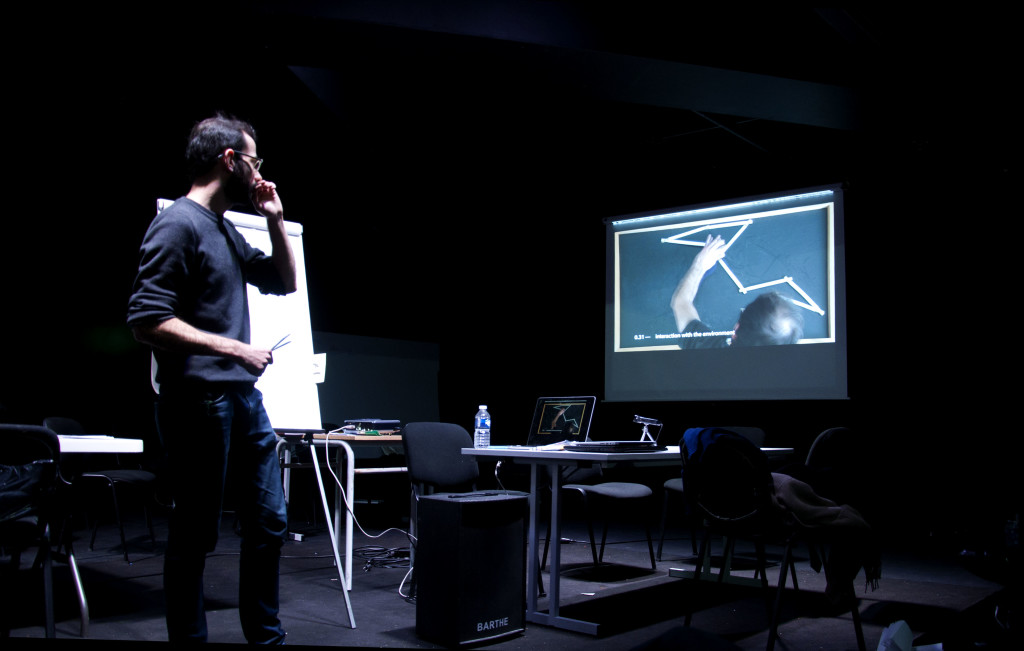
Talk by Benoît Verjat, Théâtre des Amandiers, 2014
• Filipe Pais, Le Retour des Objets, Quasi objets et Super-objets, Fondation Gulbenkian, Paris, March, 2018.
• Filipe Pais, Out of Control — Misbehaviour and Disobedience of Objects, Lecture at Interface Cultures, University of Arts and Design, Linz, Austria, June, 2017.
• Filipe Pais, Behaviors and Misbehaviors, lecture at Noroff University, kristiansand, Norway, May 24, 2016.
• Filipe Pais, Errors and Misbehaviors, conference at VETLICAT (Vocational and Educational Training, Linking Creativity & Advanced Technology), Lisbon, November 28, 2015.
• Samuel Bianchini and Emanuele Quinz, Objets à comportements. Céleste Boursier-Mougenot, une étude de cas, conference at the Montreal Museum of Fine Arts, November 4, 2015.
• Samuel Bianchini and Nicolas Reeves, Objets à comportements, conference at La Chambre Blanche, Québec, October 31, 2015.
• Ritta Baddoura, Du familier face au robot: affectivité, subjectivité et movement; Serge Tisseron, Des objets que nous rêvons vivants: projection, attachement, empathie; and Gentiane Venture,Interaction Homme-Robot : Vers une compréhension mutuelle du langage non verbal ?, contributions to the Behaviors research seminar, EnsadLab, Paris, April 23, 2015.
• Elisabetta Zibetti, Moving on Its Own: How do Audiences Interact with an Autonomous Moving Artwork, conference at CHI 2015, Seoul, April 18–23, 2015.
• Samuel Bianchini, Emanuele Quinz, Florent Levillain, Elisabetta Zibetti, Objets à comportements, conference for the Sciences Po École des Arts Politiques (Speap) program, Théâtre des Amandiers, December 10, 2014.
• Dance Notations and Robot Motion, symposium organized by Jean-Paul Laumond and Naoko Abe, LAAS-CNRS, Toulouse, 13-14 November 2014.
• Syncretic Transcodings 2014, seminar co-organized by Nicolas Reeves, with Samuel Bianchini, Elisabetta Zibetti, Philippe Giguère (Université Laval), Joëlle Pineau, and Inna Sharf (Université McGill), Hexagram, Concordia University, Montréal, 7-8 November 2014.
• Animer les images, Animer les objets, seminar as part of the Behaviors project, with the collaboration of the Animation department at EnsAD, EnsadLab, Paris, 6 June 2014.
• Samuel Bianchini, Emanuele Quinz, Elisabetta Zibetti and Florent Levillain, Objets à comportements (The Behaviors of Things), presentation at a robotics seminar at the LAAS-CNRS, Toulouse, April 4, 2014.
• The Behaviors of Things, symposium organized by Samuel Bianchini, Emanuele Quinz, and Valérie Guillaume with the collaboration of Philippe-Alain Michaud, Centre Georges Pompidou, Paris, June 8, 2013.
